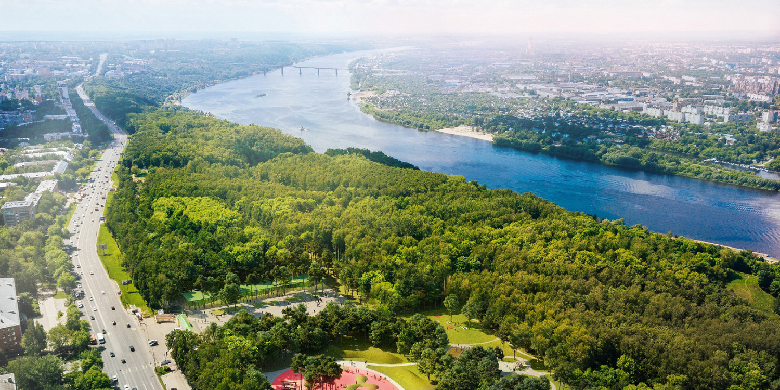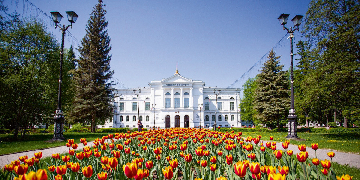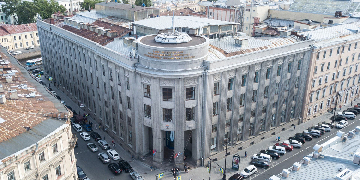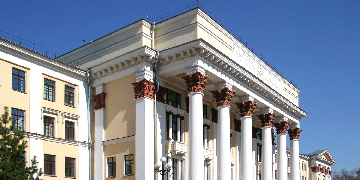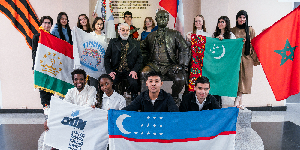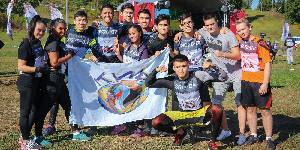The Nizhny Novgorod Region is a vast region in the center of European Russia – it is a part of the Volga Federal District. The administrative center, the city of Nizhny Novgorod, is located at the confluence of two rivers - Volga and Oka, 400 km northeast from Moscow.
The Volga River divides the region into two parts – the Left Bank (Zavolzhye) and the Right Bank, which differ very much from each other in natural and climatic conditions. Zavolzhye is a plain. The Right Bank of Oka and Volga is a rolling plain.
The region has more than 9,000 rivers and brooks. The largest rivers are Volga, Oka, Vetluga, and Sura. There is Gorky Reservoir and Nizhny Novgorod hydroelectric power plant in the region.
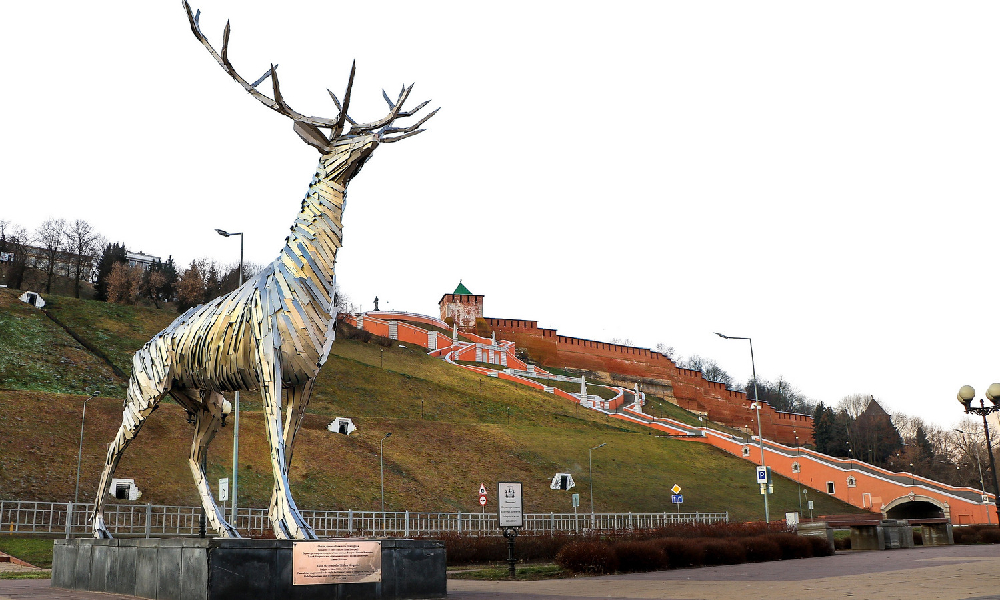
by Наталья Бурухина, nn.ru
Chkalov Staircase
The climate of Nizhny Novgorod Region is moderately continental. Winters are usually cold and snowy, and summers are short and moderately hot.
Around 48% of the territory is covered by forests. Coniferous forests are a major type of vegetation.
The regional economy is based on the processing industry. The largest share in the industry is taken by manufacturing transportation means and equipment, oil products, metallurgical production, and manufacturing of finished metal products. The key industries are mechanical engineering and metalworking, followed by chemical and oil refining industries, forestry, wood processing and paper industries. The main area of the mechanical engineering industry is transport engineering, including car manufacturing, shipbuilding, diesel engine manufacturing, aircraft engineering, and machine tool engineering, with car manufacturing playing a primary role.
The region is known for the world-recognized scientific schools:
- radiophysics and electronics, including physics of solid microstructures
- nuclear and laser physics
- high energy physics
- nonlinear dynamics
- organometallic chemistry
- chemistry of high-purity substances
- microbiology
- high technologies in medicine: cardiology, traumatology, and orthopedics
The Nizhny Novgorod Region is a large agricultural region. The specializations of agriculture are: grain and potato production in crop farming and meat and dairy production and poultry farming in animal farming.

ngiamz.ru
Nizhny Novgorod Kremlin
Nizhny Novgorod
The city of Nizhny Novgorod – the region’s administrative center – is a large transport hub. Extensive water, railway, motor transport routes establish reliable ties with raw material supplies bases and districts – consumers of products manufactured in the region as well as large cultural centers.
Nizhny Novgorod is Russia’s largest industrial center with the enterprises of mechanical engineering, metalworking, and information technology playing a leading role.
Nizhny Novgorod was founded in 1221 by Prince Yuri Vsevolodovich to protect Russian borders. Under Ivan III, Nizhny Novgorod was a sentry city. It had a regular army. This was the place for Moscow to march against Kazan.
Nizhny Novgorod made a great contribution to the construction of the Russian state. In 1612, Kuzma Minin and Prince Dmitry Pozharsky’s militia from Nizhny Novgorod played a decisive role in the liberation of Moscow from Polish intervention.
During the Soviet period from 1932 to 1990, the city was named after Maxim Gorky, the Great Russian writer who was born there.
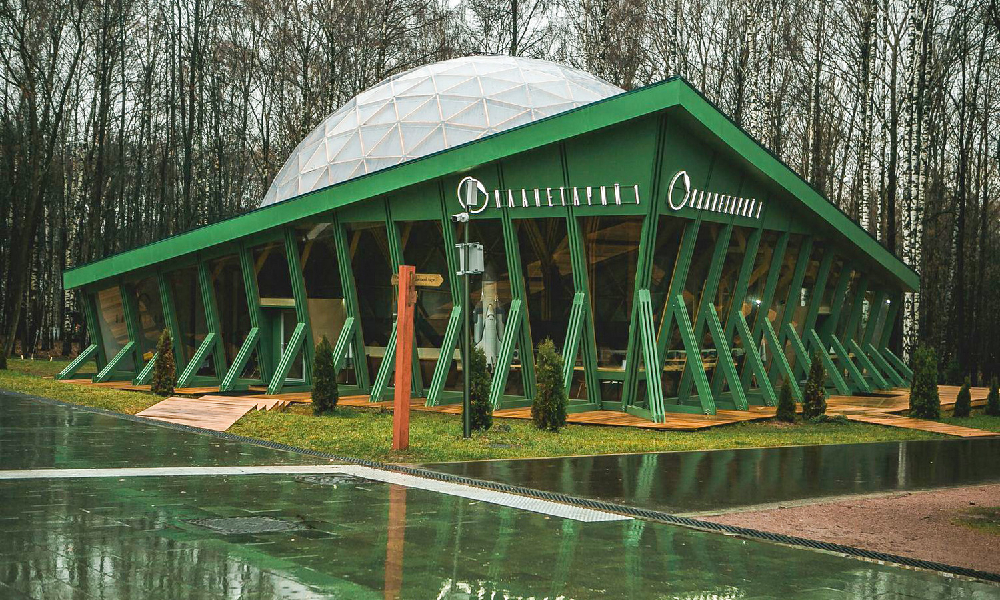
swissparknn.ru
Switzerland Park, Planetarium
Today, the city, that once played such a significant role in the history of Russia, is turning into a modern metropolis. Nizhny Novgorod is Russia’s largest center of river cruise tourism and the venue of Nizhny Novgorod fair-based international exhibitions.
Nizhny Novgorod is one of the richest cultural centers in Russia. The most prominent artists have received education in the local theater and art schools. The city has opened a large number of theaters, museums and cinemas.
This city can surprise any traveler by an entwinement of modern and ancient buildings, each time rising before your eyes in a completely unexpected appearance.

nn-grad.ru
Spit of Nizhny Novgorod
10 facts about Nizhny Novgorod
- The most unassailable Kremlin in Russia was besieged five times in its entire history, but was never taken.
- Nizhny Novgorod organized the famous militia led by Kozma Minin and Prince Dmitry Pozharsky that liberated Russia from Polish-Lithuanian intervention.
- The city has two of the world’s four churches built in a special inimitable style at the expense of merchant Grigory Stroganov, a famous “oligarch” of Petrin times.
- Nizhny Novgorod has the longest pedestrian staircase in Russia. The staircase is eight-shaped and has 560 steps from both sides and 442 steps from bottom to top from the right side. The staircase looks solid from Volga, and that is precisely why Nizhny Novgorod residents not only hold track-and-field competitions on it, but also use it to create a unique art object.
- The Upper Volga Embankment is 80 meters high, which makes it the highest embankment in Russia.
- Nizhny Novgorod has a cableway, which is the longest one not only in Russia, but also in entire Europe. It is 3,362 meters long.
- The name of Sormovo district was derived from the word “sram”, or “sorom” (which means “shame”). Five hundred years ago, “soromnye” (“shameless”) people – tramps and beggars were settled there.
- Nizhny Novgorod boasts a lot of historic sights associated with Maxim Gorky. One of them is the Bugrovs' Poorhouse that has been preserved to the present day. It was a prototype of the famous homeless shelter from the Lower Depths play.
- Nizhny Novgorod has a state-of-the-art planetarium, which is also an ambitious research center. The main hall of the planetarium is equipped with the system of Argus Planetarium projectors – one-of-a-kind Russian counterpart of Western projection systems. The Nizhny Novgorod Planetarium has a digital telescope and Russia’s only spacecraft docking simulator accessible to visitors.
- One of Stalin’s bunkers built at the beginning of the Great Patriotic War, which was never used by the leader, is located in Nizhny Novgorod. The secret bomb shelter was called Special Facility N74.
In the next issue of the HED magazine, read about the ancient town of Gorodets

nn-grad.ru
Bolshaya Pokrovskaya Street
16.10.2023
